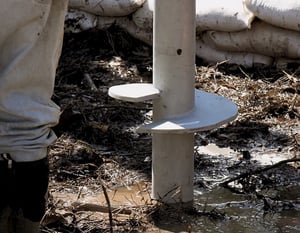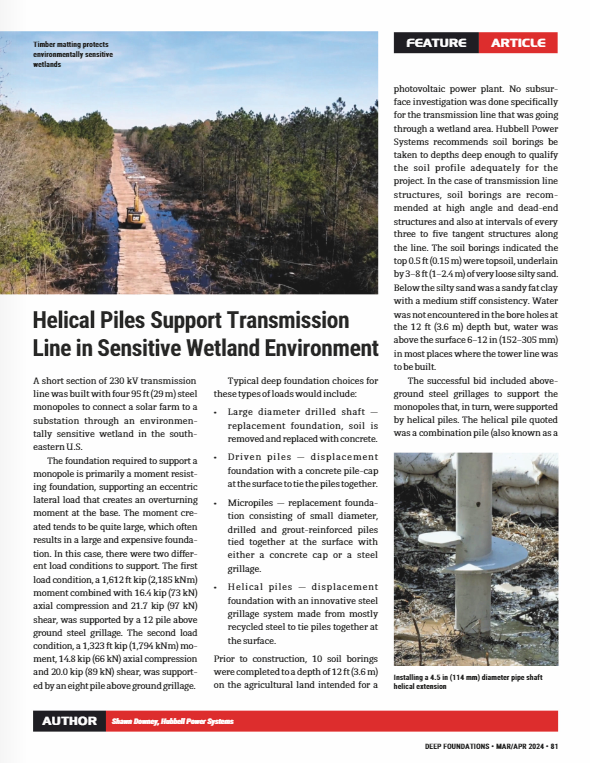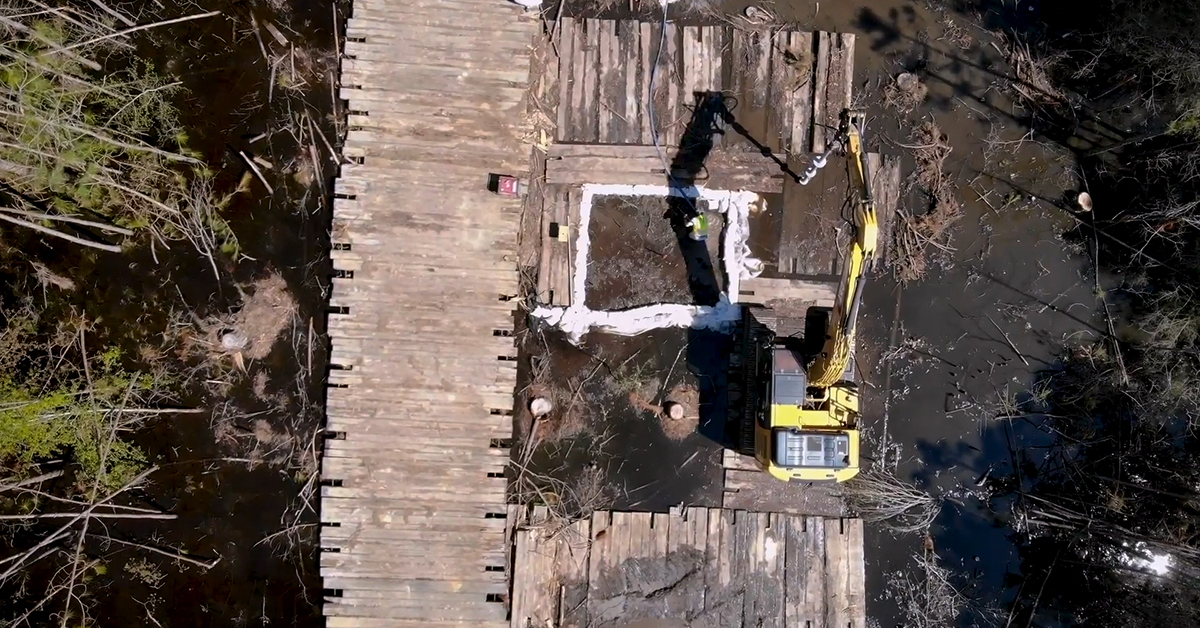The foundation required to support a monopole is primarily a moment foundation, supporting an eccentric lateral load that creates overturning moment at the base. The moment created tends to be quite large, which often results in a large and expensive foundation. In this case, there were two different load conditions to support. The first load condition, a 1,612 ft-kip moment combined with 16.4-kip axial compression and 21.7-kip shear, was supported by a 12 pile above ground steel grillage. The second load condition, a 1,323 ft-kip moment, 14.8-kip axial compression and 20.0-kip shear, was supported by an 8-pile above ground grillage.
 Typical deep foundation choices for these types of loads would include:
Typical deep foundation choices for these types of loads would include:
- large diameter drilled shaft - replacement foundation, soil is removed and replaced with concrete
- driven piles - displacement foundation with a concrete pile-cap at the surface to tie the piles together
- micropiles - replacement foundation consisting of small diameter, drilled and grout-reinforced piles tied together at the surface with either a concrete cap or a steel grillage
- helical piles – displacement foundation with an innovative steel grillage system made from mostly recycled steel to tie piles together at the surface.
Prior to construction, ten soil borings were completed to a depth of 12-feet on the agricultural land intended for a photovoltaic power plant. No subsurface investigation was done specifically for the transmission line that was going through a wetland area. Hubbell Power Systems Inc. recommends soil borings be taken to depths deep enough to qualify the soil profile adequately for the project. In the case of transmission line structures, soil borings are recommended at high angle and dead-end structures and also at intervals of every three to five tangent structures along the line. The soil borings indicated the top 0.5 feet was topsoil, underlain by 3 to 8 feet of very loose silty sand. Below the silty sand was a sandy fat clay with a medium stiff consistency. Water was not encountered in the bore holes at the 12-foot depth but as seen in the pictures, water was above the surface 6 to 12 inches in most places where the tower line was to be built.
Click to read the rest of the story in DFI's Deep Foundations Magazine, Mar/Apr 2024 issue.

READ THE ARTICLE

 Typical deep foundation choices for these types of loads would include:
Typical deep foundation choices for these types of loads would include:


